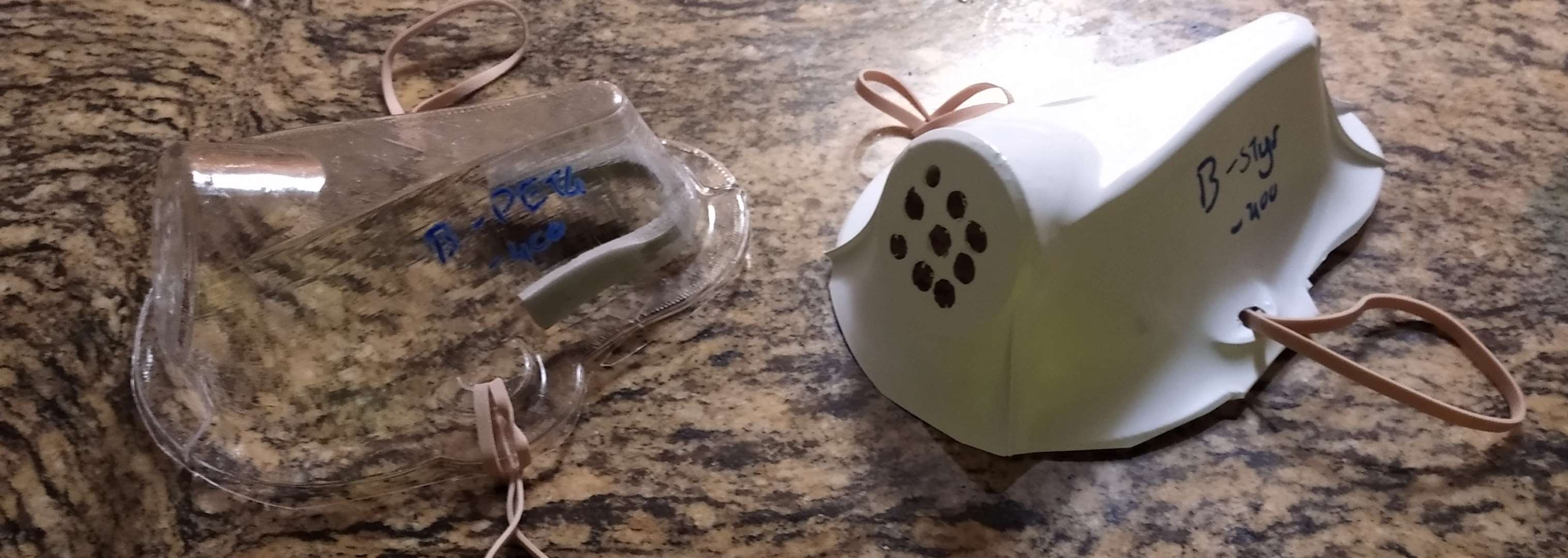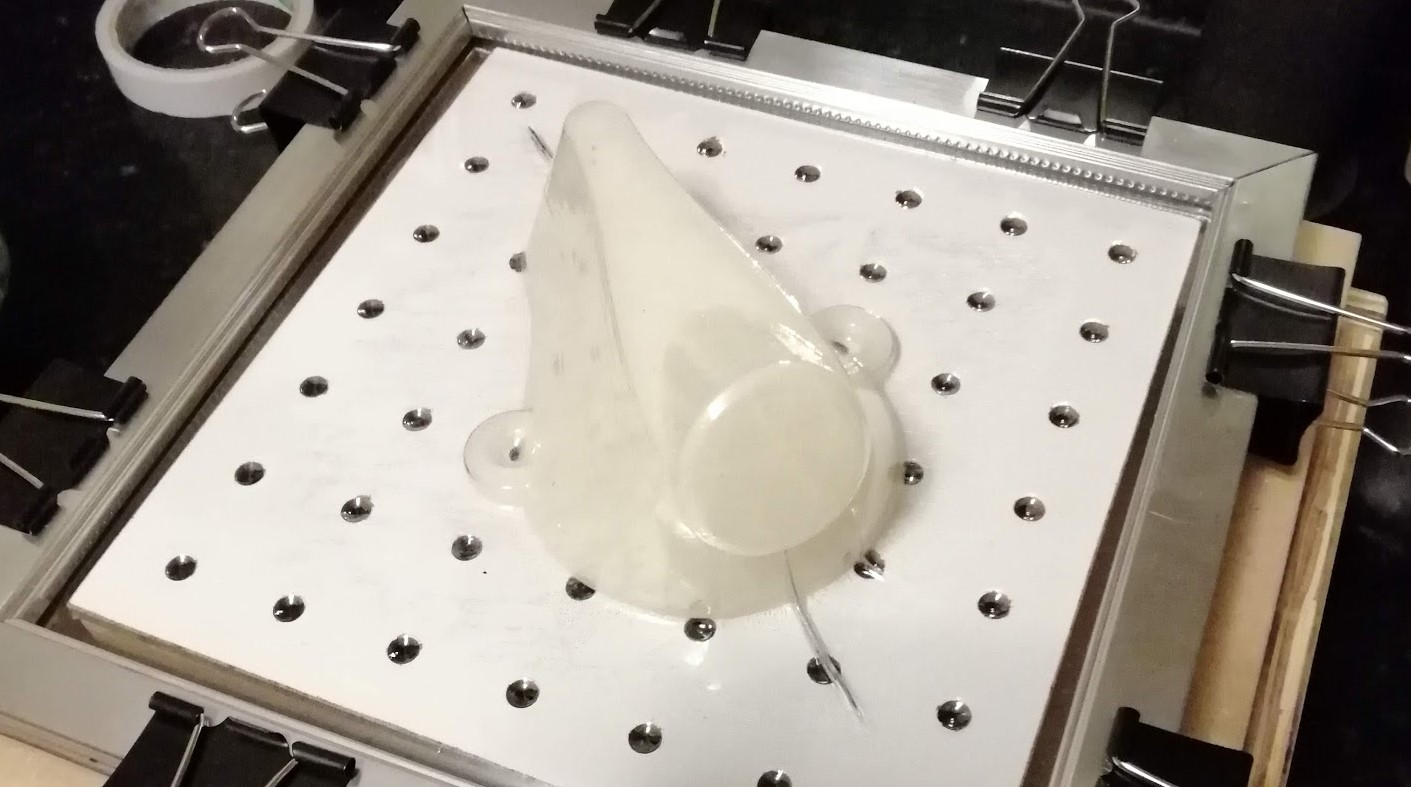We’re trying to create a mask that fulfills a similar need to face masks (not N95 masks) for use in what the CDC calls a contingency or crisis capacity.
The Third Mask
This is the third mask design, made by vacuum-forming sheet plastic onto a 3d-printed mold. We’ve produced this mask in 0.040” (~1 mm) PET-G and 0.010” (~0.25 mm) Polystyrene. The mask body, including filter area, is molded in one piece and then cut from the rest of the sheet using pliers. Some drilling and reaming is necessary to make the filter holes and rubber-band attachment points.
It takes about five minutes to produce a single mask, which is much, much faster than any of our previous designs. The limiting factor in the process is softening the plastic in an oven. The plastic is placed onto a 3d-printed mold, and a shop-vac draws air down until the plastic conforms to the mold shape. To aid this process, the mold is printed with low infill (~10%) and a low flow rate (~ 96%) to allow for small gaps in the mold surface.
Filter material is pushed into the cylinder portion of the mask and taped down with gauze.
The lack of any 3d-printed components means that this can be printed easily and sanitized with any method other than heating. The choice of material affects the rigidity of the mask, which in turn affects comfort.
Next steps
Both prototypes are being tested for comfort and fit. If that works well, we’ll produce these in bulk.
The key next step before scaling up production is trying to pack two masks in a single 12” x 12” sheet (to improve material efficiency), and producing a drilling jig to better control the shape of holes in the filter cylinder.


